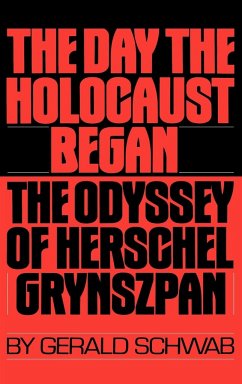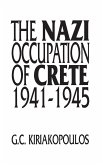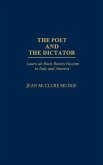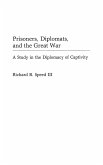This account of the trial of Herschel Grynszpan, a 17-year-old Polish German-Jew who shot the Third Secretary in the German Embassy in Paris in 1938, draws on German documents recently brought to light and describes in detail Grynszpan's experiences at the hands of both the French and Germans.
On November 7, 1938, Herschel Grynszpan, a 17-year old Polish-German Jew, walked into the German Embassy in Paris and shot Third Secretary, Ernst vom Rath, who died shortly after. Vom Rath's death triggered the destruction and mahem which became known as Kristallnacht, or The Night of Broken Glass, resulting in the death of hundreds, the razing of 265 synagogues and 200 houses, the demolition of 7,500 business establishments, and the incarceration of 30,000 Jews in concentration camps. Herschel Grynszpan was immediately arrested. France's foremost criminal lawyer took over his defense. On June 8, 1940, two days before the French Government evacuated Paris, the youth was indicted for murder. A month later he was in Nazi hands, being interrogated by the Gestapo in anticipation of a major show trial. Little has been known in the past about this extraordinary young man. Using German documents never before revealed, including a startling coded testament, Gerald Schwab examines his background and the events culminating in the shooting. The book describes, in considerable detail, Grynszpan's experiences in French and German hands and his trial which was to become Nazi Germany's justification of the Holocaust. It also challenges some commonly held ideas about the cause of the shooting and its aftermath. The Day the Holocaust Began describes the life of a mixed-up, emotionally immature youngster who developed into one of the most amazing and unlikely heroes of modern history, demonstrating the power of the human spirit against overwhelming odds. Anyone interested in modern European history, the Nazi Government, the persecution of the European Jews, as well as students of the Holocaust and its many ramifications, will find The Day the Holocaust Began invaluable reading.
Hinweis: Dieser Artikel kann nur an eine deutsche Lieferadresse ausgeliefert werden.
On November 7, 1938, Herschel Grynszpan, a 17-year old Polish-German Jew, walked into the German Embassy in Paris and shot Third Secretary, Ernst vom Rath, who died shortly after. Vom Rath's death triggered the destruction and mahem which became known as Kristallnacht, or The Night of Broken Glass, resulting in the death of hundreds, the razing of 265 synagogues and 200 houses, the demolition of 7,500 business establishments, and the incarceration of 30,000 Jews in concentration camps. Herschel Grynszpan was immediately arrested. France's foremost criminal lawyer took over his defense. On June 8, 1940, two days before the French Government evacuated Paris, the youth was indicted for murder. A month later he was in Nazi hands, being interrogated by the Gestapo in anticipation of a major show trial. Little has been known in the past about this extraordinary young man. Using German documents never before revealed, including a startling coded testament, Gerald Schwab examines his background and the events culminating in the shooting. The book describes, in considerable detail, Grynszpan's experiences in French and German hands and his trial which was to become Nazi Germany's justification of the Holocaust. It also challenges some commonly held ideas about the cause of the shooting and its aftermath. The Day the Holocaust Began describes the life of a mixed-up, emotionally immature youngster who developed into one of the most amazing and unlikely heroes of modern history, demonstrating the power of the human spirit against overwhelming odds. Anyone interested in modern European history, the Nazi Government, the persecution of the European Jews, as well as students of the Holocaust and its many ramifications, will find The Day the Holocaust Began invaluable reading.
Hinweis: Dieser Artikel kann nur an eine deutsche Lieferadresse ausgeliefert werden.








